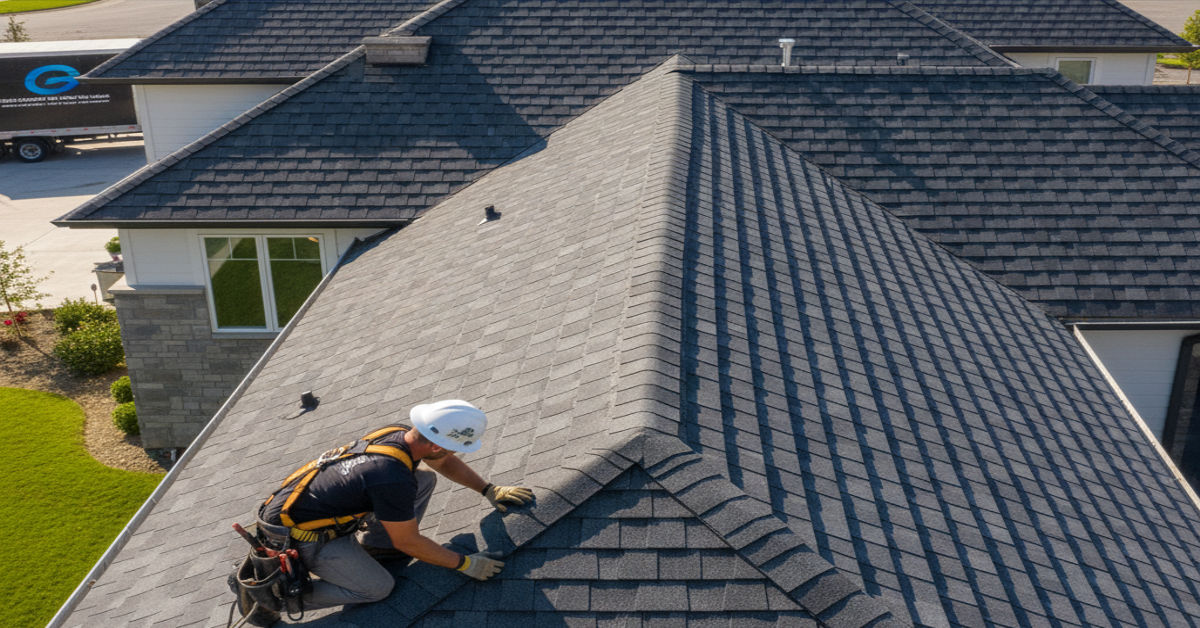Your roof is one of the most critical components of your home. It serves as the first line of defense against the elements, shielding your property and family from rain, wind, snow, and sun. A well-installed, properly maintained roof not only protects your home but also enhances its curb appeal and energy efficiency.
In this comprehensive guide, we’ll explore everything you need to know about Home Roofing — from types of roofing materials and signs your roof needs repair or replacement to installation, maintenance tips, and how to choose the right roofing contractor.
Why Roofing Matters
The roof covers your entire home and plays several vital roles:
- Weather Protection: It prevents water intrusion that can damage the structure and interior.
- Energy Efficiency: Proper roofing materials and insulation reduce heating and cooling costs.
- Structural Integrity: A strong roof supports your home’s framework and keeps it stable.
- Aesthetic Appeal: Roofing style and color significantly impact your home’s look and value.
Given these factors, investing in quality roofing and maintenance is essential.
Types of Roofing Materials
Choosing the right roofing material depends on factors like climate, budget, architectural style, and durability needs. Here are some of the most common roofing materials:
1. Asphalt Shingles
Asphalt shingles are the most widely used Home Roofing material in residential homes. They are affordable, versatile, and come in various colors and styles.
- Pros: Cost-effective, easy installation, widely available
- Cons: Moderate lifespan (20-30 years), susceptible to damage in extreme weather
2. Metal Roofing
Metal roofs are gaining popularity due to their durability and energy efficiency. They come in panels or shingles made from steel, aluminum, copper, or zinc.
- Pros: Long-lasting (40-70 years), fire-resistant, reflective surface reduces cooling costs
- Cons: Higher upfront cost, can be noisy during rain or hail
3. Wood Shingles and Shakes
Wood roofing offers natural beauty and charm, commonly made from cedar, pine, or redwood.
- Pros: Attractive, good insulation properties
- Cons: Requires maintenance, susceptible to fire and rot without treatment
4. Slate Roofing
Slate is a natural stone known for its elegance and extreme durability.
- Pros: Very long lifespan (50-100 years), fire-resistant, low maintenance
- Cons: Expensive, heavy requiring reinforced structure
5. Clay and Concrete Tiles
Popular in Mediterranean or Spanish-style homes, tiles are durable and weather-resistant.
- Pros: Long-lasting, fireproof, energy-efficient
- Cons: Heavy, costly, brittle and can crack under impact
6. Synthetic Roofing
Made from rubber, plastic, or polymer blends, synthetic roofing can mimic slate, wood, or tile.
- Pros: Lightweight, durable, lower cost compared to natural materials
- Cons: Newer products may have limited track record
Signs Your Roof Needs Repair or Replacement
Recognizing when your roof needs attention can prevent costly damage and extend your home’s lifespan.
Common Warning Signs
- Missing or damaged shingles: Curling, cracked, or missing shingles are a clear indicator of aging or storm damage.
- Granule loss: Excessive granules in gutters or around the home suggest shingle wear.
- Leaks or water stains: Interior water spots or leaks on ceilings indicate roof penetration.
- Sagging roof deck: A sagging roof means structural issues requiring immediate attention.
- Moss or algae growth: While often cosmetic, extensive moss can trap moisture and damage roofing materials.
- Increased energy bills: Poor insulation or ventilation can indicate roofing problems.
The Roofing Installation Process
A professional roofing installation involves several critical steps:
1. Inspection and Measurement
The contractor inspects the existing roof condition and measures the roof area to estimate material needs.
2. Removing Old Roofing
Old shingles or tiles are removed to expose the roof deck. Any damaged decking is replaced.
3. Installing Underlayment
A protective underlayment or roofing felt is installed to provide a moisture barrier beneath the roofing material.
4. Installing Flashing
Metal flashing is installed around roof penetrations like chimneys, vents, and valleys to prevent leaks.
5. Applying Roofing Material
The chosen roofing material is installed according to manufacturer specifications and local codes.
6. Final Inspection and Cleanup
The contractor inspects the finished roof, cleans the job site, and removes debris.
Maintenance Tips to Extend Your Roof’s Life
Proper maintenance can add years to your roof’s life and prevent costly repairs:
- Regular Inspections: Check your roof at least twice a year and after major storms.
- Clean Gutters: Prevent water backup by keeping gutters clear of debris.
- Remove Debris: Clear leaves, branches, and moss from the roof surface.
- Trim Overhanging Trees: Prevent damage from falling limbs and reduce moss growth.
- Address Issues Promptly: Fix minor leaks or shingle damage before they worsen.
How to Choose the Right Roofing Contractor
Hiring a qualified contractor is key to a successful roofing project:
- Verify Licensing and Insurance: Ensure the contractor is licensed and carries liability and workers’ compensation insurance.
- Check Experience: Look for companies with proven experience and positive customer reviews.
- Request Written Estimates: Get detailed quotes outlining materials, labor, and timelines.
- Ask About Warranties: Understand manufacturer and workmanship warranties.
- Communication: Choose contractors who communicate clearly and are responsive.
Energy Efficiency and Roofing
Modern Home Roofing materials can improve your home’s energy efficiency by reflecting sunlight and insulating against heat loss.
- Cool Roofs: These have reflective coatings or light colors to reduce heat absorption.
- Insulated Roofing Panels: Some materials come with built-in insulation for better thermal performance.
Energy-efficient roofing lowers utility bills and increases comfort.
Environmental Considerations
Roofing choices can impact the environment:
- Recycled Materials: Some shingles incorporate recycled rubber or plastics.
- Sustainable Options: Metal and slate roofs are durable, reducing waste.
- Proper Disposal: Responsible removal and recycling of old roofing materials reduce landfill impact.
Conclusion
Your roof is a vital part of your home’s protection, energy efficiency, and aesthetic appeal. Whether you choose economical asphalt shingles or premium materials like metal or slate, investing in quality roofing in Rockland County and proper maintenance pays off over time.
Regular inspections, timely repairs, and choosing a skilled Home Roofing contractor ensure your roof withstands the elements and keeps your home safe and comfortable for years to come.







